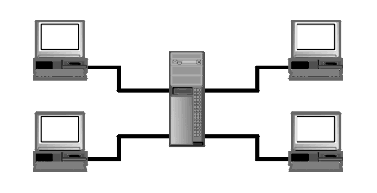
The amount of confidential information traveling on your network grows as more employees use your corporate network. This poses a security risk if someone breaks through your firewall, or someone already behind your firewall has access to the network—and perhaps confidential information. For example, an intruder can mimic an IP address and receive information that was intended for someone else at that IP address. Or, an intruder can use software to view data as it travels on your LAN.
You can deploy Intel Packet Protect in the areas of your network that transmit sensitive information. Some areas of your network might require the additional protection provided by Intel Packet Protect, while other areas might not. Use your corporate security guidelines to help determine which areas of your network require Intel Packet Protect.
Perhaps you have a server that stores highly confidential information, such as corporate financial figures or e-commerce transactions. You can use your operating system's tools to help protect data stored on the server's hard disk, but what about when other systems access that information? Use Intel Packet Protect to protect your highly confidential information as it travels to and from the server.

Copyright © 2000, Intel Corporation. All rights reserved.
Intel Corporation assumes no responsibility for errors or omissions in this document. Nor does Intel make any commitment to update the information contained herein.
* Other product and corporate names may be trademarks of other companies and are used only for explanation and to the owners' benefit, without intent to infringe.